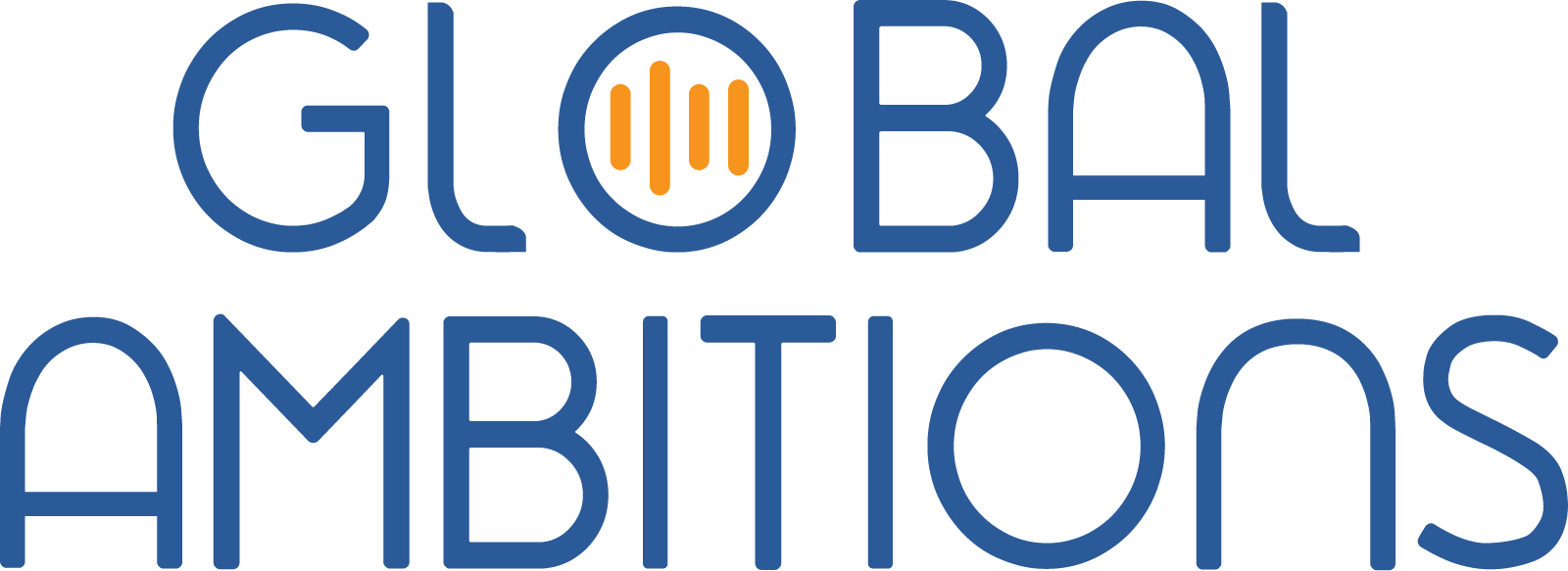With Natalia Levitina, Globalization & Localization Professional
Below is a full transcript of this episode
Antoine Rey
Hi, I’m Antoine Rey and I’ll be your host today for this Global Ambitions podcast episode. And my guest today is Natalia Levitina who’s a globalization and localization professional and a board member at AMTA. And today we’ll be talking about some tips for building a business case for localization. Natalia, welcome to the program.
Natalia Levitina
Thank you, Antoine. Great to be here.
Antoine Rey
Do you want to tell us a little bit about yourself and your background in Natalia?
Natalia Levitina
Sure. Yeah. So I’ve been in the localization industry for over 20 years now. I started my career at an LSP and a desktop publishing department. And then I also had an opportunity to work a little bit in sales at another LSP. And then for the last 15 years, I’ve been part of PTC and a large localization department at a software company. And my responsibilities there were technology management as well as the last thing that I was doing there was managing a translation team.
Antoine Rey
Great. And we’ll come back on the technology side. I know that’s going to be kind of a recurring theme in this conversation as you contributed greatly to some of the chapters within the Globalization Playbook that we’ve talked a few times about on this podcast recently with different people that we interviewed like Lyena Solomon or Karen Combe as well.
But in this case, let’s get started as well on what do people need in general to build a business case?
Natalia Levitina
What do you need to build a business case for? Right?
Antoine Rey
Correct.
Natalia Levitina
As we were thinking about it while writing that Globalization Strategy Playbook, there are basically a couple of distinct cases. You know, a localization department, regardless of where it fits in an organization, is just a business unit. So as with any business unit, you have to think about justifying your budget.
So you would want to think about justifying your budget when you’re buying technology and you would when you’re expanding your services, translation services, and going after a particular market. So you want to add a language.
Antoine Rey
OK, so these are two main cases when you would want to create a business case. And do you want to give some ideas on tips and best practices, maybe on how to build those types of business cases? And we can take a couple of examples, whether you’re looking at the technology or services or anything else.
Natalia Levitina
So it might seem like an overwhelming task to write and to build a business case. So let’s try to break it down into steps.
Antoine Rey
Mm-Hmm.
Natalia Levitina
Like you said, let’s talk about technology first. We write about it in chapter five of the playbook. If anybody wants to read more about that. The first thing, as with any business case, is to think about your business objectives. So the ones that we’ve identified, there are four, are cost savings efficiency, great user experience, faster time to market and enabling global growth.
What we did in the technology chapters, we mapped these o localization tools. So you know that there are different localization technologies. TMS is the most widely known, of course, machine translation. But the other ones like terminology, query, cost, and resource management solutions and DevOps and testing tools. But not all of them tick all of the boxes in terms of the objective. So, for example, only TMS and machine translation ticked all the boxes, in our opinion. And we also created a technology maturity model that helps you understand where you currently sit in your technology journey.
So when you look at those two things and you map it all out, then you can prioritize what you want to spend your money on first. And then of course, you want to put together all of your requirements. And in order to do that, you have to think about your stakeholders.
Who do you need to work with to figure out what needs to be in that tool? So for example, if you are working with a… of course you want to talk to your localization partners, your engineers, these are people who are going to be in and out of that tool every day. So they’re your primary stakeholders. You may also need to think about your in-house linguists if you have them. But you also don’t want to forget people like your marketing and in-country reviewers. So if the tool is not easy for them to use, then that may lead to detachment from the process, and they may not contribute to the success of your marketing campaigns as much as you had hoped for.
And, of course, the other important stakeholders are your vendor or vendors. They would be also primary users of your tool. And chances are that they have already used that particular tool and then they have some opinions about it. So you want to find out about that as well. So working with your stakeholders is important from the requirements perspective. But it’s also important to get their buy-in when you’re actually going to be presenting your business case to them.
Antoine Rey
Mm-Hmm.
Natalia Levitina
Once you decided on what your technology is going to be, you also want to think about your implementation approach. Will you be buying it or will you be building it? Maybe you even want to use your vendor’s tool? So these are all of the questions that you want to answer before you present your case.
And now, of course, you want to write that business case, you want to present it. And in order to do that, you need your data in order to get that buy-in. And so there is a good example in Chapter six, which talks about data analytics, and in general, that chapter focuses on, you know, how do you get insights from your metrics? How do you make sure that you are solving the right problems? And it’s not all about just having the numbers. The point is how do you interpret these numbers? How do you create a story with these numbers? And how do you tailor that story to a particular audience?
If your stakeholders, you know the people who you are getting the budget from, your management, you want to make sure that you are speaking their language. And in terms of the services example, there is a good one about David in that chapter. And he just was hired as the localization manager at a small startup. You realize that the company was expanding to Germany, but nobody thought about putting some budget for that translation service because common understanding is that people in Germany speak English. You don’t necessarily have to localize into German. So in order to convince his management to allocate the money, he had to collect a lot of data to support his case.
What was the total addressable market right? What were the competitors doing in Germany? What would the cost to localize versus the revenue be? And also, what would it mean for the brand to miss the opportunity to enter the market early? What I like about this chapter, Chapter six, is that there is a formula for calculating an effectiveness score, which helps one to prioritize markets and languages.
But going back to building a business case for buying technology. So suppose you create a story and you convinced your management. They like how you presented your numbers to your budget. And does this mean that you are done? We actually think that it doesn’t. And that’s because the process is circular.
Because once you’ve done that and you’ve gotten your budget now, you’re on to implementing a solution. And once you implement the solution, you want to start monitoring. And getting reporting out of the tools so that you can demonstrate the value of that decision that you made and the technology that you bought. After that, you sort of go back in that circle for evaluating, you know, where are you at in the process, mapping your new objectives to the tool, figuring out where you sit in that technology journey again, and then building a business case again and building your requirements again. And so going on to the next tool if you need to buy in order to progress in that maturity model.
So the process never stops. Basically, it’s a continuous process like localization is right. But so in this case, during that process, you probably also, especially on the technology side, have to integrate with potentially different systems, whether it is the content management system on the marketing side or a source repository on the engineering side. Do those guys become part of your stakeholders when you’re building a business case as well? Or do they come later in the equation? Absolutely, no. You have to think about all of these requirements before you get the tool. Because it’s either you who is going to be integrating or them who are going to be integrating or both of you who are going to be integrating. And the tool that you buy, of course, needs to have an API in order to integrate. So these are very important things that you need to think about.
Another important thing is your security department, your IT, right? You know, they may have opinions on what tools you should be buying and whether it’s going to be OK to open certain ports in order for that tool to communicate with you. So what of your CMS is an on-prem CMS and you’re buying a cloud technology for your teams? Will they be able to talk to each other? Will that be secure enough for them to approve it, as well as giving access to external suppliers?
Antoine Rey
Potentially.
Natalia Levitina
Yes, exactly. And how that process should work?
Antoine Rey
Yes. OK. And then like in Chapter five, if I remember well, of that globalization playbook, I think it refers to a character called Diana. A persona called Diana. And I think I saw through a few chapters where she’s had a lot of challenges in general. Can you share with us maybe some of the most common challenges or successes that a person can encounter when building that business case outside of getting all the right stakeholders and getting the data lined up?
Natalia Levitina
Yeah, that was a fine example of Diana being described as a localization technology manager at a large software company. And so she’s responsible for implementing a TMS. And according to her view, everything is going extremely well except that, you know, she runs into a marketing executive one day in a hallway, and the marketing executive casually tells her, Oh, we’re signing a contract for another TMS. And that comes as a complete surprise. That’s an indication you need to be in touch with your stakeholders all the time.
And so Diana is able to sort of get her foot in the door to convince the executive to have a meeting to explore this further, to sort of tell them, you know, maybe having two TMS systems is not necessarily the best thing for the company. But what she realizes is that her arguments are falling on deaf ears. Because what’s important for the marketing executive is that the marketing, the reviewers in-country don’t like the existing technology, and they think it’s really hard to do the reviews right. So they get detached from the process. They don’t contribute to the campaigns. The campaigns are not as successful as they could be.
So that’s the problem that the executive is trying to solve. And the way to solve that is where the TMS, where things are very easy for them to do. So, they go ahead and they buy the other TMS.
Antoine Rey
Mm-Hmm.
Natalia Levitina
So is that a failure? Is this not a failure? Well, it’s just an indication that you can’t just convince saying things are going to be hard for localization, which is true when you have two TMS systems. It’s really hard to go from one to another. Nobody really cares because there’s another business problem to solve. So what Diana has to do is she needs to basically work with all of the stakeholders going forward to understand what the requirements are from everybody’s perspective and try to find a tool that works better for everyone. And she’s able to go and find another TMS that fulfills the requirements of all of the departments, not just for localization or not just for products.
And then the important thing is to stay in touch with the marketing team. So she’s able to do that then and find out that actually there are some problems with vendors. Some quality issues that the marketing managers are having a hard time with managing. They’re not really localization managers. They’ve got some other things to do, so they’re not really enjoying trying to figure it all out. So by basically working with the marketing team, Diana is able to convince them that, Hey, now that we’re going to get a new TMS that will fulfill your requirements, we can also take the program back and manage it for you. So you don’t have to ask those localization managers.
And it’s actually easy in terms of writing a business case when you have two TMS systems and you’re replacing it with one. That becomes really easy because you basically getting rid of two parts, right? You may be able to save some money.
Antoine Rey
But it shows the importance of engaging the stakeholders at the right time at an early stage of the requirements gathering phase, I guess.
Natalia Levitina
Yeah, and not only through the requirements gathering phase, but again staying in touch with them and making sure that you understand how the processes are working or not working for them. It’s really important. Just don’t work in a silo.
Antoine Rey
Great. Well, Natalia, thanks very much for sharing some insights there, and it’s great for our listeners because I know a lot of them would have to manage business cases on a daily basis and certainly reach out to us and you if they have questions. So thanks very much for your participation today, and we’ll talk to you very soon.
Natalia Levitina
Thank you very much Antoine for having me. It was great talking to you.

Natalia Levitina
Globalization & Localization Professional




